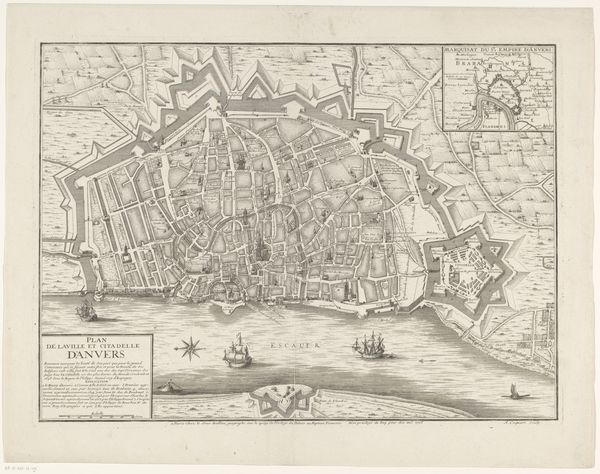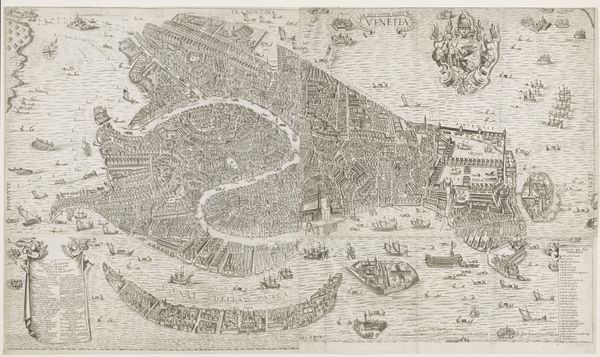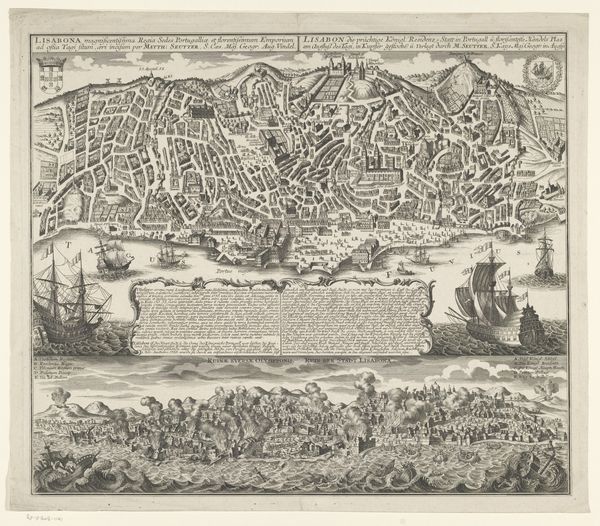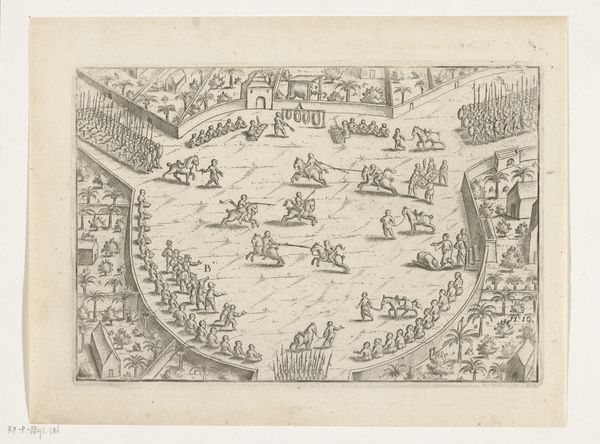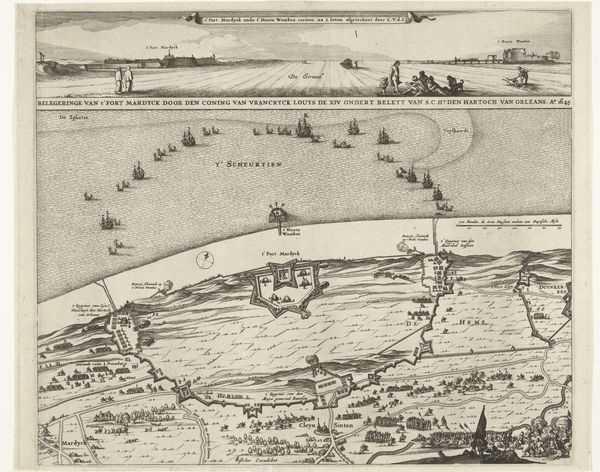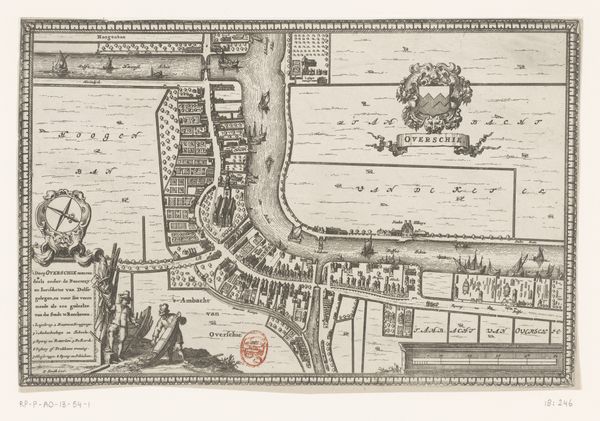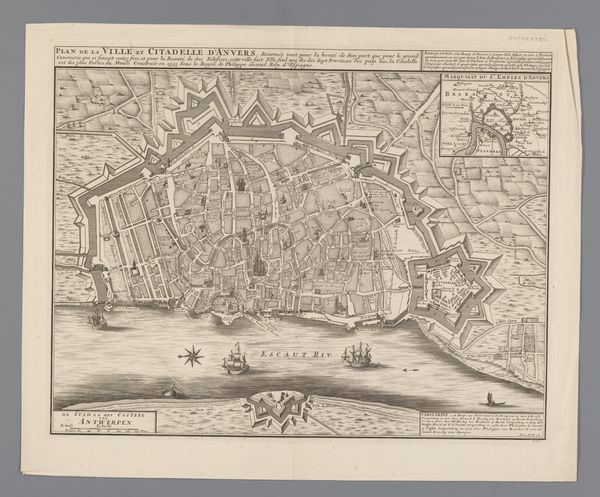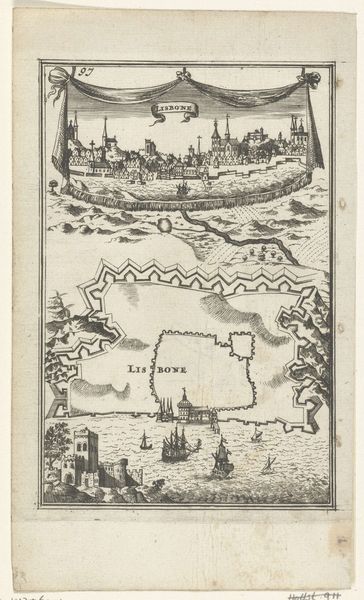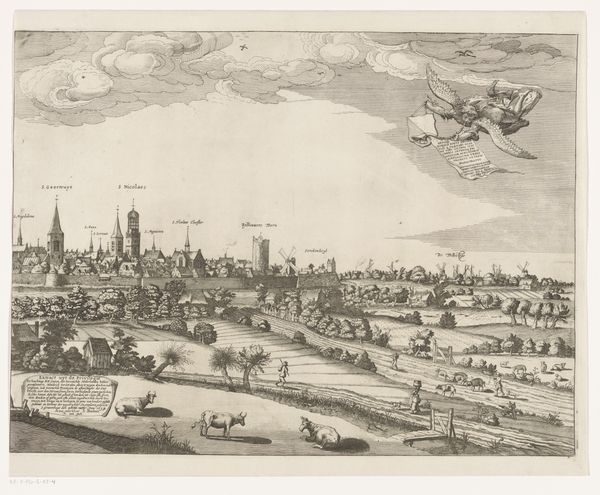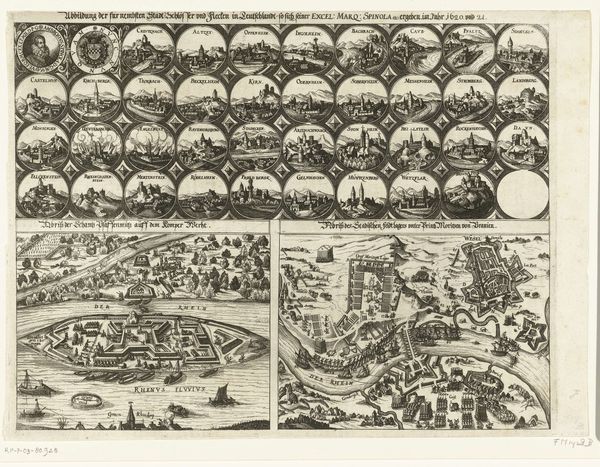
print, engraving, architecture
#
baroque
# print
#
old engraving style
#
perspective
#
cityscape
#
italian-renaissance
#
engraving
#
architecture
Dimensions: height 396 mm, width 516 mm
Copyright: Rijks Museum: Open Domain
Curator: Editor: Here we have Giovanni Battista Falda’s "Plattegrond van de stad Rome," created in 1676. It's an engraving that meticulously maps the city. The detail is astonishing! I'm struck by how clearly it displays power through the architecture. What stands out to you? Curator: Well, seeing Rome depicted this way, at this time, speaks volumes about the relationship between power, representation, and the construction of urban identity. Notice the strategic placement and prominence given to religious buildings. How does that resonate with you in terms of the sociopolitical climate of Baroque Rome? Editor: It does seem intentional. The churches are grand and set apart. So, is Falda making a statement about the Church’s influence on Rome and its people? Is this map just an objective depiction, or does it also push a particular ideology? Curator: Exactly! It’s critical to question the supposed objectivity of these depictions. The map isn't merely a neutral representation, but an active participant in shaping how Rome and its religious authority are perceived. Consider the intended audience, most likely wealthy tourists who would consult it while visiting these locations. How do you see that influencing Falda's choices? Editor: Knowing the map catered to tourists helps highlight the way this promotes a very specific religious experience. Thinking about it now, this map can almost be read as a Baroque advertisement for the Catholic Church. I hadn't considered how actively it's trying to involve its audience in the narrative of the city! Curator: Precisely! This image really illuminates how maps like this functioned within the complex power dynamics of the time. We have to see beyond the surface and actively look into how knowledge itself gets politicized, which then determines what stories are being told and who gets to tell them.
Comments
No comments
Be the first to comment and join the conversation on the ultimate creative platform.
